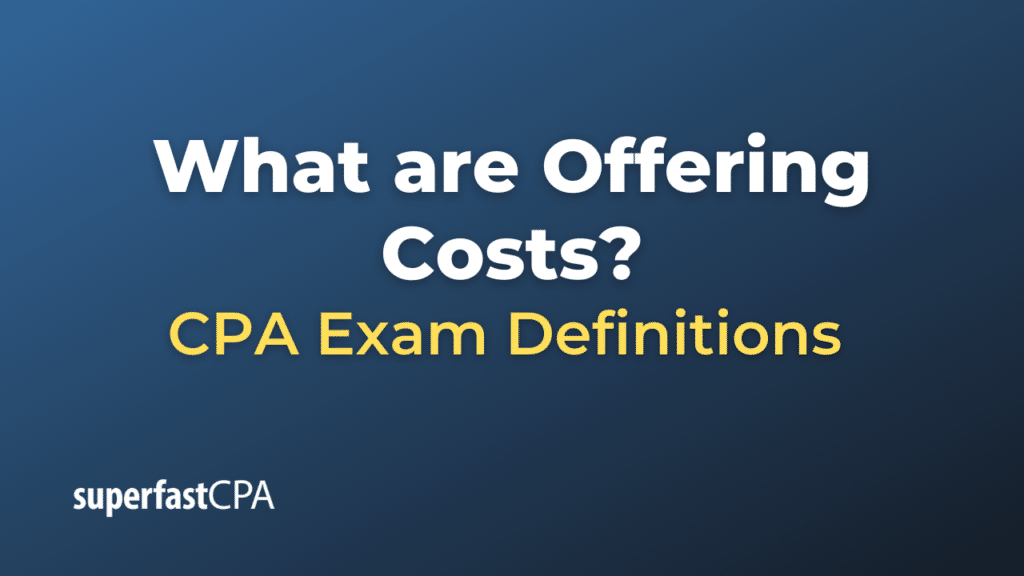Offering Costs
Offering costs refer to the expenses associated with the sale of new securities to the public. These costs typically include underwriting fees paid to investment banks, legal and accounting fees, printing and distribution expenses, and registration fees paid to regulatory authorities such as the Securities and Exchange Commission (SEC) in the United States.
When a company decides to raise capital through an initial public offering (IPO), secondary offering, or other types of securities offerings, it incurs these costs. These are all part of the total cost that the company must bear to complete the offering. It’s crucial for a firm to take these costs into account when considering an offering, as they can significantly impact the net proceeds received from the sale.
Offering costs can also include costs related to roadshows, where the company’s executives present their strategy and financials to potential investors, advertising expenses to promote the offering, and even the expenses related to due diligence investigations by underwriters or other parties. These costs are often deducted from the gross proceeds of the offering, reducing the amount of capital that the company actually raises.
Offering costs can vary depending on a number of factors, including the size and type of the offering, the market conditions, the complexity of the company’s operations, and the geographic regions where the securities are being offered.
Example of Offering Costs
Let’s consider a hypothetical company, TechStar Inc., which decides to go public through an Initial Public Offering (IPO).
The company aims to raise $200 million from the IPO. To facilitate the process, TechStar hires an investment bank as its underwriter. The underwriter’s role includes advising the company, helping price the IPO, buying the securities from the company, and then selling them in the market.
Let’s assume that the underwriter charges a fee of 7% of the gross proceeds. This is a common underwriting fee in many IPOs. That means the underwriting fee will be $14 million ($200 million * 7%).
In addition to this, TechStar will also incur legal and accounting fees to comply with all regulatory requirements, prepare the necessary documentation, and audit their financial statements. Let’s say these amount to $1 million.
TechStar will also need to pay for printing and distribution of prospectuses and other marketing materials, registration with the Securities and Exchange Commission (SEC), and for roadshows to present the company to potential investors. These costs can vary widely, but let’s assume they add another $1 million.
So, in this case, the total offering costs for TechStar’s IPO would be:
Underwriting fees: $14 million Legal and accounting fees: $1 million Other costs (registration, printing, roadshows, etc.): $1 million
Total Offering Costs = $16 million
Therefore, even though TechStar nominally raises $200 million from the IPO, after subtracting the offering costs, the net proceeds that it actually receives are $184 million ($200 million – $16 million).













